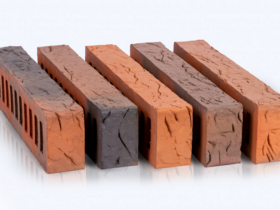According to the state (texture) of the surface, external plasters are divided into the following types: 1. Smooth, the surfaces of which are leveled with wooden graters and metal ironings during the set of the solution. 2. Rudely processed, which are obtained by notching with percussion instruments (buchards, trousers, etc.) or by applying gravel or crushed stone to the surface. This type includes the type of processing for “fur coat”. 3. Performed by spray, by hitting a stick of brushes or panicles moistened in a plaster solution. In this case, the surface of a stone of various structures can be simulated, from small to large grain. 4. Metal, bristle brushes and panicles made of properly chopped rods made. The ending is carried out until the solution is hardened. 5. Rough with the right pattern of strokes. In this method of decoration, various scratching tools are used: combs, saws, metal brushes, templates for stretching and stamping, rolling rollers. Surface treatment is done in the period from the start of setting to the solution of the solution. 6. Rudely with an incorrect pattern, arbitrary arrangement of grains and strokes. This type of texture simulates the surface of the split of natural stones, their structure and texture (layout of layers). A good decorative effect can be achieved when using color plaster, which gives a finished building a complete look and eliminates the need for subsequent periodic coloring. Color plaster is almost no different from the usual decorative. The only difference is that various dyes are introduced into the solution of its covering layer: mineral paints, colored small crumbs or a powder of natural stone rocks. One of the basic requirements in the production of color plaster is the need to process with a colored layer of a plane (for example, the walls of the house) to one technique, from the same solution. In the joints of plastering layers made at different times, heterogeneity in shades is inevitable.







